The buildings of Osaka City Electricity Bureau (3-Part 1) : Electric Science Museum and Air Defense
This is the topic of the Osaka City Electric Science Museum mentioned in the previous article.
The museum was conceived at the end of 1932, construction began in 1934, and the museum opened in 1937.
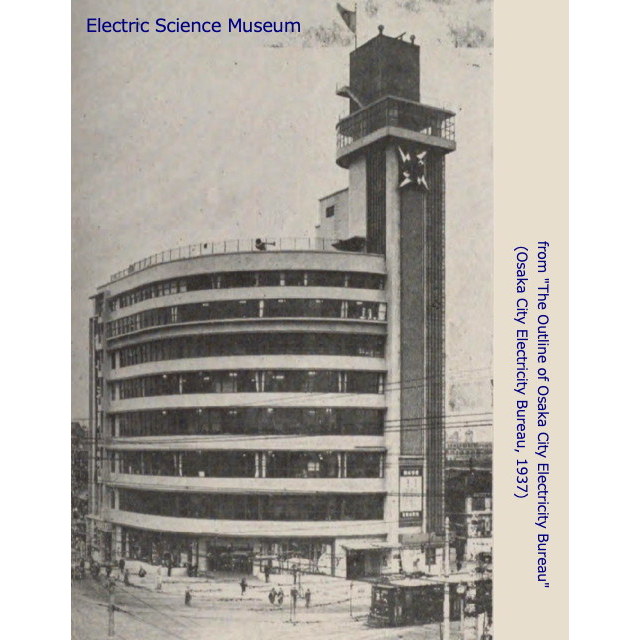
After looking at several pre-WWII books, the word “air defense" caught my eye.
I found it written in several books, so I will quote from them. (Only the quoted parts have been changed in font color. The original text is in Japanese.)
First is a book published while the Electric Science Museum was under construction, “Ten Years of Electric Light City Management".
Electric Science Museum
This museum has the Electricity Promotion Center and the Electric Appliance Municipal Shop, and a more fully equipped large-scale exhibition hall will be established. The museum is a museum of electric science, and as an encyclopedia of electricity, it is expected to contribute to the improvement of the quality and uniformity of market prices. The budget was established in 1932, and construction is currently underway on a site on the banks of the Yotsubashi. The site will be equipped with military facilities for air defense in case of emergency.
(“Ten Years of Municipal Electricity" edited by Osaka City Electricity Bureau, 1935, p. 61)
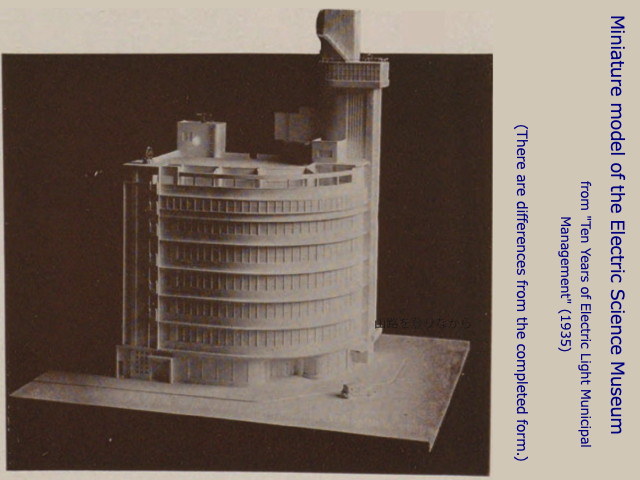
The word “air defense" reminded me of the prewar “Air Defense Law," which was promulgated in April 1937. However, it seems that air defense exercises had been conducted even before that.
For example, in “Fire Fighting and Air Defense Knowledge" (Hamamatsu Branch, Shizuoka Fire Fighting Federation) published in 1928, there is a description of an air defense drill held in Osaka in that year. (Conducted July 3-9)
Air defense exercises were also mentioned in the Army Special Grand Exercise held in Mito in 1929 (Showa 4).
Let us return to the Electric Science Museum.
The second book is “Osaka City Government in 1937," published shortly after the opening of the Electric Science Museum. It is a bit long, but I will quote it in its entirety. (The original text is in Japanese.)
From early on, the city made efforts to disseminate electrical knowledge with the aim of electrifying homes. In order to further expand and strengthen this effort, the city invested approximately 2 million yen to construct the Electric Science Museum in Yotsubashi, which is unprecedented in Japan in terms of its scale, and it was opened to the public in March to great acclaim.
The museum is intended to promote the diffusion of electrical knowledge and the use of electricity, as well as to show future directions in the principles of electrical science, thereby contributing to the sound development of the electric utility industry and to the development of industry and the improvement of production efficiency.
Taking a look at the whole picture, the first floor displays and sells marketable electrical machinery and appliances, and the second floor exhibits weak electric power and wireless communication applications. The third floor will exhibit the application of electric power and electric heating, the fourth floor will exhibit lighting, and the fifth floor will explain the principles of electricity.
The sixth to eighth floors will be equipped with the only planetarium in the East, where visitors will be able to observe the operation of celestial bodies with the best of electric science.
The ninth floor and above are used as air defense towers to monitor air raids in case of emergency, and air defense sirens at 12 locations throughout the city are controlled by a single button. In addition to this air defense mission, it is planned to tie up with a weather station to provide forecasts in the event of a natural disaster.
The museum is equipped with all the facilities necessary to accomplish its mission, and the building itself is equipped with all the latest technology, including all electric power sources and the latest innovations in lighting methods.
The main building also publishes and distributes periodicals and materials, and conducts various research and studies related to electricity. These activities are intended to supplement school education and to perfect science education by providing useful materials for extracurricular teaching, especially for teaching inventions and introducing new patented products.
(“Osaka City Government in the 12th Year of Showa" edited by Osaka City, May 1937, p120-121)
The last section is from the “Outline of Osaka City Electricity Bureau" published about six months after the opening of the Electric Science Museum.
Located in Yotsubashi, the heart of the city, the museum is a modern steel-framed reinforced concrete structure with one basement floor and eight stories above ground, with an additional seven stories in the tower on the east corner of the roof.
Basement level: Public dining room, electric machine room, etc.
First floor: Display room
(Omitted…)
Seventh floor: visitors’ lounge
Eighth floor: office
Tower 9th floor: Rooftop promenade
Towers 10, 11, 12, 13, 14, 15 floors, air defense tower.
The 13th floor is used as a command center for the city’s air defense warning siren network, and the 14th floor as an aerial observation room. In case of emergency, the tower is an important facility for the city’s air defense as a light and fire control tower, and is also used for noon bulletins and disaster warnings in times of peace.
Tower tops: Jingu Yohaisho (place to bow in the direction of the Ise-jingu Shrine)
(“Outline of Osaka City Electricity Bureau" General Affairs Division, Osaka City Electricity Bureau, December 1937, p. 90-92)
Thus, air defense was mentioned as a matter of course in each of these documents.
I remembered that air defense of public buildings was mentioned when I had previously made another pop-up card. I looked back and saw that the Omuta City Hall was the one. They still have the anti-aircraft gun emplacements, air defense watchtowers, etc.
Construction of the Omuta City Office began in 1934 and was completed in 1936.
I have not researched this, so I am guessing, but does this mean that there were instructions or requests from the military to local governments to install air defense equipment in public buildings in the early Showa period?
By the way, here is a pop-up card of the Omuta City Office I made before. (I did not publish the pattern.)
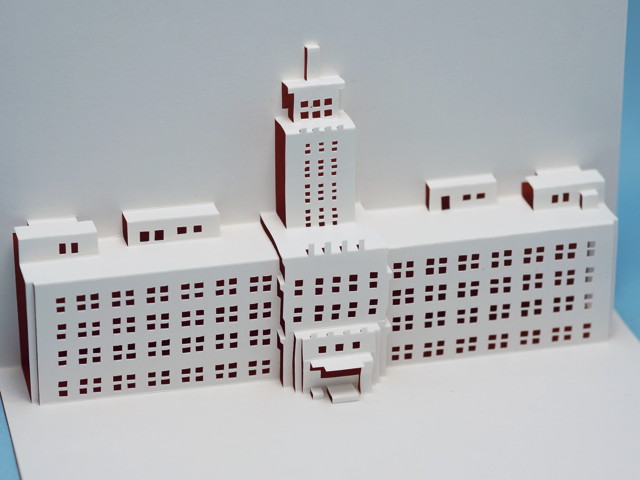
It seems that the Omuta City Office was scheduled to be demolished, but the plan was brought back to square one. (April 2020)
I found the article in the Nishinippon Shimbun article.
(What started out as a topic about Osaka has turned into a topic about Fukuoka.)
Today’s article is “Osaka City Electric Bureau Buildings (3 – Part 1)". The second part will be about the pop-up cards at the Electric Science Museum.
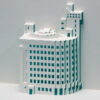
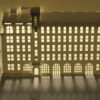
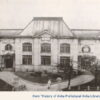
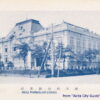

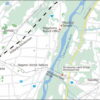
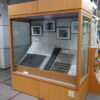
Recent Comments